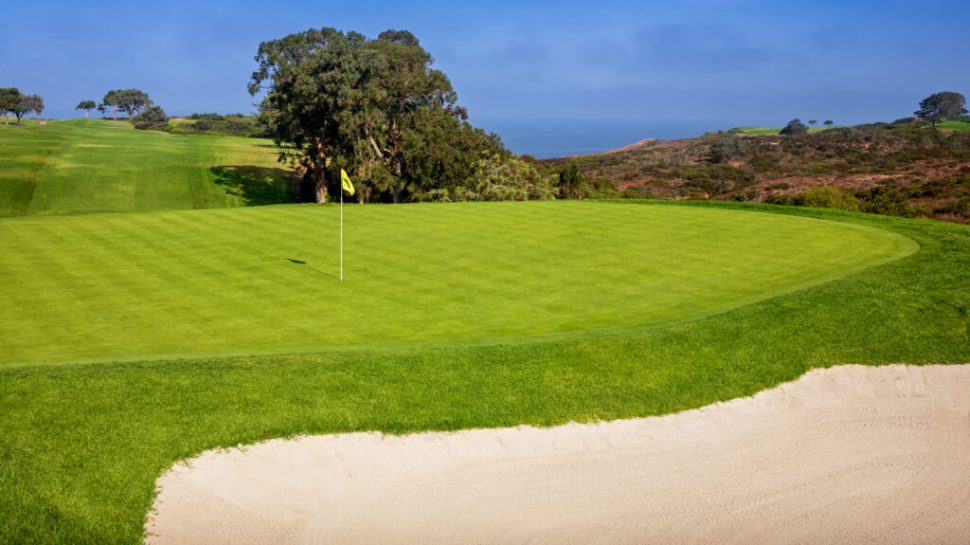SAN DIEGO, CA. Staging a major championship is no small feat. There’s a myriad of elements requiring careful study and meaningful action. First among them all is how the host course is prepared for America’s national championship — the U.S. Open.

Estimated reading time: 7 minutes
Since 1988, architect Rees Jones has been the point person in updating various host sites for both the U.S. Open and PGA Championship. Over a dozen courses have engaged the Montclair, NJ-based architect in bolstering the varied challenges each provides.
Jones inherited the tagline, “Open Doctor,” from his renowned father Robert Trent Jones, Sr., who pioneered such efforts with his work at various courses in the 1950s and 1960s including the likes of Oakland Hills / South, Oak Hill / East, Baltusrol / Lower and Congressional, to name just a few.
In the summer of 2001 Torrey Pines South Course was updated by Jones in preparation for the ’08 U.S. Open. In 2018-2019 Jones returned adding a few additional improvements.
The most interesting dynamic of the South Course rests with the varied putting surfaces. Jones created various internal contours — greens within greens — mandating precise approach play. In order to secure the best approach angles the need for quality driving has been accentuated with fairways pinched in by both penalizing rough and deep bunkers.

A number of the greens are also tilted from back to front and are well-defended. Quality approach shots are needed in order to be within likely birdie putt range.
“The way the greens are set-up I would doubt you’ll see many long putts successfully made because of the varied movements players will encounter,” said Jones.
The sight lines on the South Course are straightforward. In short, the test of golf is right in front of the player to execute high quality shots time after time. The rewards can be had — but penalties for not doing so are just as quick to take place.
The chess match between architect and player will clearly be front and center for the championship. Jones weighed in on the four holes he believes will play a major role in determining what golfer will capture the U.S. Open trophy when play concludes.
7th Hole / 462 Yards / Par-4

Central to one’s success at the long par-4 7th is thinking smartly. As one stands on the tee the challenge becomes self-evident.
The hole banks to the right — two daunting bunkers awaiting those pulling tee shots in that direction.
Jones added the second furthest bunker on the left side in 2019 — requiring a 330-yard carry to avoid.
Generally, the 7th plays back into the prevailing wind. “The difficulty of the 7th starts from the tee because being in the proper position sets everything in motion,” said Jones. “The back right pin placement is the hardest and there’s a single bunker that protects much of that frontal area. Players who miss left can very easily skip through the green and reach a chipping area which will only serve to propel one’s ball even further away.”
Those who do reach the chipping area will find the probability in escaping with par severely tested.
“The back pin locations are tougher at Torrey Pines because they are elevated. It takes a truly well-executed shot to get all the way back to those locations.”
11th Hole / 225 Yards / Par-3

Often lost in the discussion are the rigors of the par-3 11th. It was suggested that the hole could be lengthened, but Jones demurred – believing the challenge was more than sufficient. “The hole features a narrow front location and a tongue is located in the right rear, “said Jones.
Players have to gauge the proper club selection and often the par-3 plays into the prevailing wind pattern.
Jones views the hole as one of the most challenging. “The green makes the players work very hard for a two-putt if one’s approach is off the mark.”
Expect to see long irons and even hybrids being used.
13th Hole / 615 Yards / Par-5

Generally, the hole plays downwind with air flow coming off the Pacific Ocean. Jones added a rear teeing area that can extend the hole to its full 615 yards. Players are confronted by bunkers on both side of the fairway and for those to contemplate going for the green in two shots it will be incumbent to avoid them and the gnarly rough that presents itself on both sides.
Jones sees the 13th as a “swing hole” where varied scores will happen. “The 13th is a 600+ yard par-5 playing downwind away from the coast. Players can go for the green in two, but be careful of the bunkers, which can lead to a tough approach shot,” said Jones. “There will be birdies — and even eagles.”
Those players failing to find the fairway will face a daunting challenge. The hole descends before climbing uphill to a perched green. “Having to play a 3rd shot from the bottom of the hill will make the pin tough to see — you won’t see the bottom of the flagstick,” said Jones.
Few will ever forget the monster-length putt Woods holed from the rear of the green during Saturday’s 3rd round in ’08. Expect more magic this year.
18th Hole / 575 Yards / Par-5

The imagery of Tiger Woods making a 12-foot putt for a tying birdie at the 72nd hole of the ’08 U.S. Open is indelibly placed in golf history. The hole will be pivotal in providing possible major swings in terms of shots gained and those lost.
“The 18th is a par-5 they can almost all reach in two and the USGA will likely set it up to reach in two,” said Jones. “The Sunday pin placement will likely be the same as where Tiger made the 12-footer in 2008 to force the playoff.”
With only three par-5s encountered the role they each play will be impactful. “The beauty of Torrey Pines is that the fairway bunkers are now meaningful and the three par-5s all play differently,” said Jones.
The stacking of bunkers on both sides of the drive zone mandates a marriage between power and accuracy.
A 3rd bunker on the left side was added and even when a more forward tee position is used at 550 yards — is very much in play.
The frontal pond will once again play a central role in determining the outcome of the championship. Pin positions can be varied — the PGA Tour when hosting the Farmers event generally places the pin in the front left side just beyond a fall off leading back into the pond. Jones expects the front right position – where Woods holed his famous putt in ’08 to be used — quite possibly in the final round.
